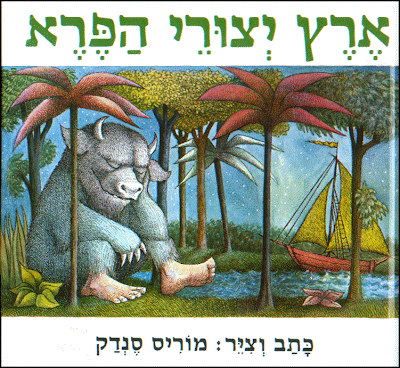A few months after my first child was born, I went to a bookstore to buy a few books that I thought needed to be on the bookshelf of my new baby’s nursery. Maurice Sendak’s “Where the Wild Things Are” was one of those books.
A childhood favorite of mine, I knew the day would come when I would read it to my son as part of our bedtime ritual. I immediately recalled that bookstore visit when I heard the news that Sendak had died Tuesday from complications of a stroke. He was 83.
Much has been written about Sendak’s imagination and his uncanny ability to create characters to whom children can relate. Many of the characters in his books were developed based on the Torah stories that his father told him as a child. Sendak has said that he embellished those stories to make them more interesting for children.
It wasn’t until I was an adult that I saw the Jewish flavor that peppers Sendak’s works.
The characters in his most well-known children’s story are based on his old Jewish relatives. In some of his stories, Yiddish words are interspersed with his poetic English.
“Where the Wild Things Are” is even based on the Yiddish vilde chaya (wild beast), which Jewish parents for generations have used to describe rambunctious children.
Some of Sendak’s stories, including “In the Night Kitchen,” speak to his own fears of the Holocaust. His immigrant parents lost most of their family members in the Holocaust and reminded him that he would have had many more cousins were it not for the Nazis.
Having learned that Sendak was influenced by his father’s nightly bedtime stories drawn from the Torah, I have found real value and meaning in reading Sendak’s books to my own children at bedtime. His children’s stories are my kids’ most requested bedtime books.
Over the years, I’ve read “Where the Wild Things Are” to my children many times. In fact, I recently read it to them in Hebrew.
Just a week ago, my daughter brought home a Hebrew version of Sendak’s masterpiece. His brilliance comes through no matter the language.
Turning the pages of the Hebrew translation, I began to laugh as I recalled the author’s uproarious appearance on “The Colbert Report” earlier this year.
Even at 83, Sendak was still entertaining both children and their parents.
His memorable illustrations and ability to turn scary monsters into lovable friends will live on into future generations, and I look forward to the day when my own children will read the stories of Sendak’s wonderful imagination to my grandchildren.
